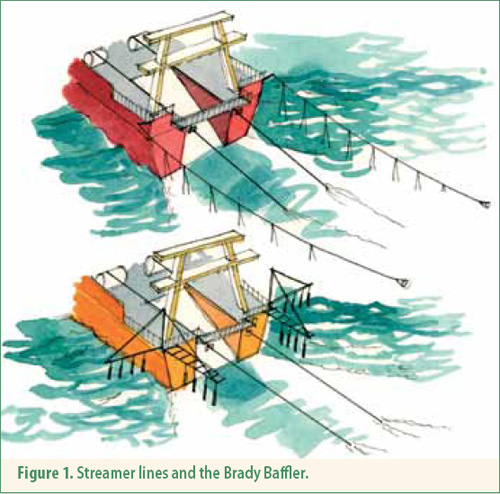Ed Melvin (School of Aquatic and Fishery Sciences, University of Washington) and colleagues have published an on-line paper in the journal Polar Biology which shows that seabird mortality by collisions with trawl cables is not restricted to the southern hemisphere. They found that, as in the south, streamer lines were the most effective mitigation measure.
The paper's abstract follows:
"Effective mitigation measures were developed to reduce high levels of seabird mortality due to warp strikes in southern hemisphere trawl fisheries. However, in northern hemisphere trawl fisheries, little is known about the extent of cable strike seabird mortality or techniques to mitigate it. We compared the rate of heavy seabird strikes by third-wire cables and warps, using three mitigation measures compared to a control of no mitigation. Experiments were conducted aboard two catcher-processor vessels targeting Walleye Pollock Theragra chalcogramma in the eastern Bering Sea: one that rendered offal into fish meal and fish oil (Vessel R) and one that minced offal prior to discharge (Vessel M). More birds attended Vessel M, but the rate of seabird cable strikes was higher on Vessel R due to the greater aerial extent of its cables. Streamer lines significantly reduced heavy seabird strikes by both cable types regardless of discharge characteristics. Reducing the aerial extent of third wires also reduced third-wire strike rates, but this method was less effective than streamer lines. Warp booms designed to divert seabirds from warps failed to reduce seabird warp strikes, but this technique could be improved. These results show for the first time that seabird strikes with modern third-wire trawl sonar cable systems can be reduced through mitigation or gear modification and that warp strikes can be mitigated with techniques similar to those found successful in southern hemisphere fisheries. Mitigation measures and concepts identified in this study should be widely applicable."
Reference:
Melvin, E.F., Dietrich, K.S. & Cardoso, T. 2010. Reducing seabirds strikes with trawl cables in the pollock catcher-processor fleet in the eastern Bering Sea. Polar Biology. http://www.springerlink.com/content/100450/?Content+Status=Accepted).

John Cooper, ACAP Information Officer, 20 September 2010

 English
English  Français
Français  Español
Español